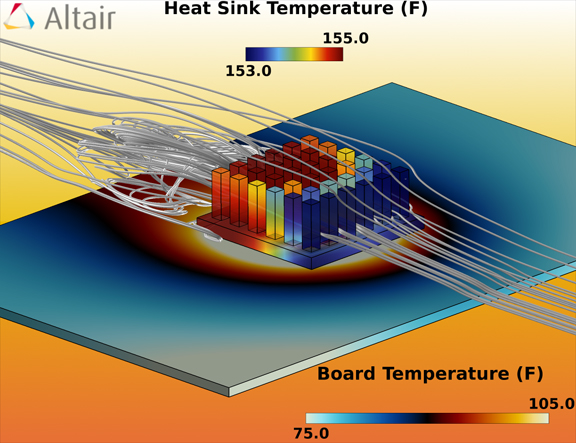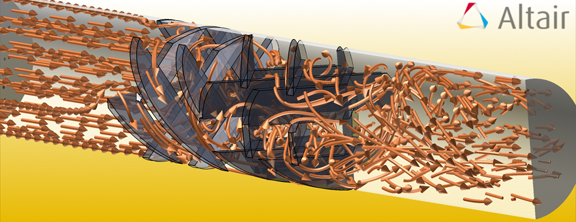Latest News
January 22, 2014
Call it the Apple effect. Call it a consequence of the Facebook generation’s desire for instant gratification. Proof of appification is everywhere.
Forbes has written about it, calling it a “seismic shift ... [that] will completely transform the web into an App-o-verse.” WSJ has blogged about it as a “bona fide business that [shows] quantifiable traction and could offer real returns.” Dell asked the question that’s on everyone’s mind: Will it take over the world?
The Apple-led appification is driven largely by tech consumers’ growing appetite for bite-size programs that can be instantly deployed to address a specific problem. This trend understandably stirs up lots of consternation and indigestion among the software giants whose forte is delivering hefty programs that tackle a slew of problems but take months (in some cases, years) to implement or learn.
In design and engineering, some say, yes, appification may work for lightweight operations, like viewing and annotating 3D CAD files, but heavy-duty jobs like computational fluid dynamics (CFD) cannot be appified. Well, CFDCalc from Altair may prove these skeptics wrong.
Two years ago, Altair acquired California-based ACUSIM, the company behind AcuSolve. Today AcuSolve’s flow simulation technology is part of Altair’s HyperWorks product line. But the company has also spawned a series of browser-based CFD calculators powered by AcuSolve.
The calculators are, to borrow Altair’s words, online vertical applications that provide a flow solution for a specific problem class. They’re housed on the CFDCalc home page. Currently there are three, developed specifically to analyze heat sink, SMX mixer (chemical mixer), and pipe performance. They went online last October.
“You provide a few inputs, like the number of pins, height, thickness, material, flow conditions, and heat. Then we generate the geometry of the heat sink, mixer, and pipe,” explained Dr. Farzin Shakib, Altair’s VP of CFD (founder and former CEO of ACUSIM).
The required geometry in these cases—the heat sink, the mixer, and the pipe—are fairly simple and largely standardized, therefore easy to generate on demand. With this approach, CFDCalc also eliminates the need for users to upload a CAD file.
The meshing and solving occur in the cloud, managed by Altair. (Technically, it uses Amazon EC2, but as far as you and I are concerned, we’re interacting with a web-based solution hosted by Altair.) “It’s a full-blown CFD program. It works for quick-and-dirty calculations, but it also works for more complex problems,” noted Farzin.
The cost of running a job on CFDCalc is more than your typical mobile app, but dramatically less than investing in your own hardware and CFD software. “A single-element SMX mixer with coarse mesh for one run might be somewhere in the neighborhood of $60-80,” said Farzin. “As you add more mesh resolution, more behavior, incremental steps, it gets more expensive.”
The results are delivered in a PDF report. The automatically generated mesh geometry is not part of the usual delivery, but it can be downloaded for a nominal fee, clarified Farzin.
Shing Pan, senior director of product marketing for Altair, noted, “We’d like to encourage others to build their own calculators too, maybe for internal use, maybe as a commercial product.”
As with the Apple app store model, interested developers may use CFDCalc’s code to develop custom apps—for example, for acoustic calculation or wind turbine performance analysis—and submit it to CFDCalc administrators. After review and approval, the developer can set the price. CFDCalc will add a fee, a percentage of the user-defined price, for hosting and marketing the user-developed program.
App development with CFDCalc is not as difficult as you might think, Farzin assured. “It’s Python-based scripting with lots of examples and capabilities,” he said. “[The calculation] can be automated in as little as a few hours, refined over three days or so. You could built a calculator in as little as a few weeks.”
For those who wish to develop calculators for internal use, the abstraction of their repeatable workflows could lead to the preservation of enterprise knowledge—a concern in the tech sector where experts tend to move around.
Currently CFDCalc programs only exist as web-based solutions, not mobile apps. (You could still run the calculators from a browser from the mobile device.) Farzin said, “[Mobile apps] are something we’ll look at in the future.”
The current Gold Rush among simulation software vendors is to make their expert-level products more accessible to a broader audience. Very few (if any) hobbyists and tinkerers might be searching for push-button CFD apps for the iPhone or iPad. It might be a technology overkill for the type of products they attempt to build. However, a significant portion of designers and engineers could benefit from easier, simpler simulation products. For them, the app-style delivery of CFD, as exemplified by CFDCalc, is a welcome change.
Subscribe to our FREE magazine, FREE email newsletters or both!
Latest News
About the Author
Kenneth Wong is Digital Engineering’s resident blogger and senior editor. Email him at [email protected] or share your thoughts on this article at digitaleng.news/facebook.
Follow DE







